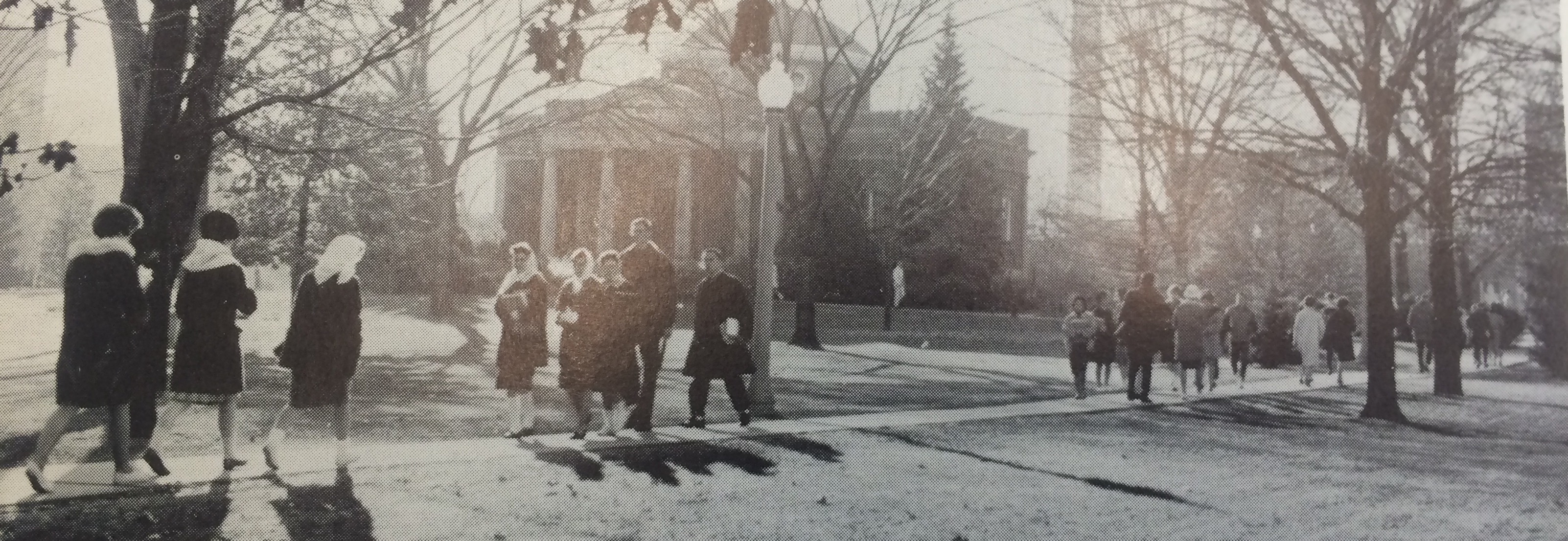The 1980s at Northeast Missouri State University saw an increase in individual identity, as well as gender equality in academics and campus life. Pop culture was influential on fashion throughout the decade, and people could choose to emulate different icons depending on how they chose to be perceived. Students often wore clothing to identify themselves with various campus organizations. This was particularly true for Greek organizations, whose members often wore letters to identify their affiliation. Greek organizations also had days when they would dress more formally in order to express their identity as a group and promote camaraderie among members. Sharon Husmann (class of ’84) provided examples of clothing with Greek letters that she has held onto:
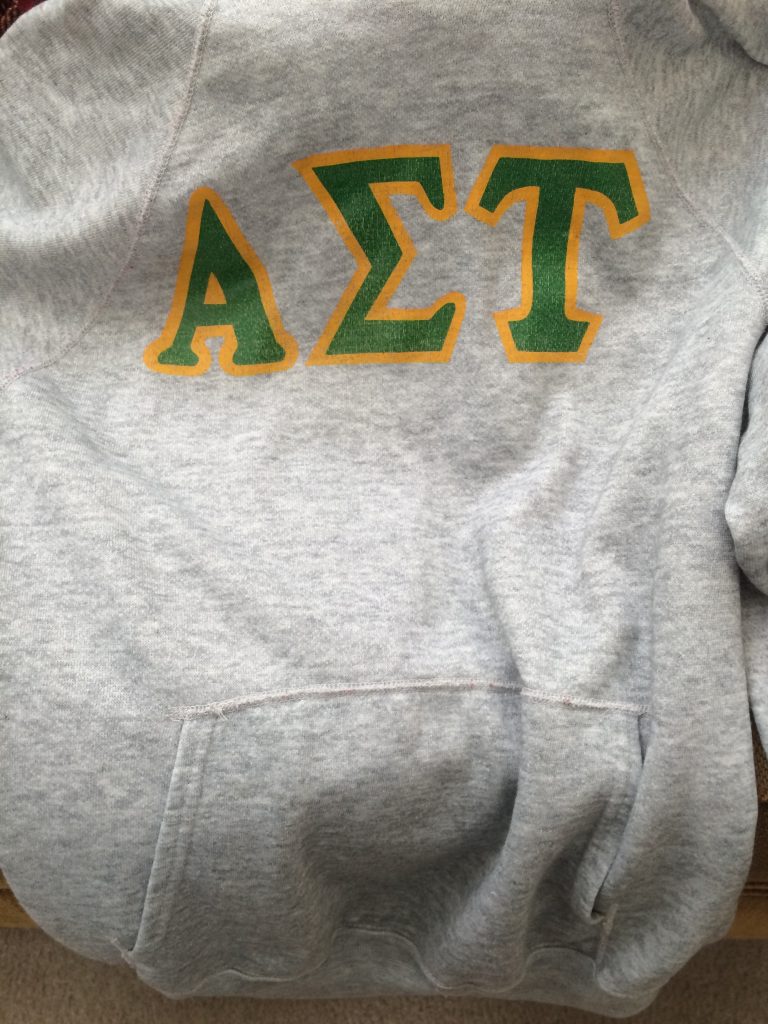
Sharon Husmann’s hoodie with sorority letters.
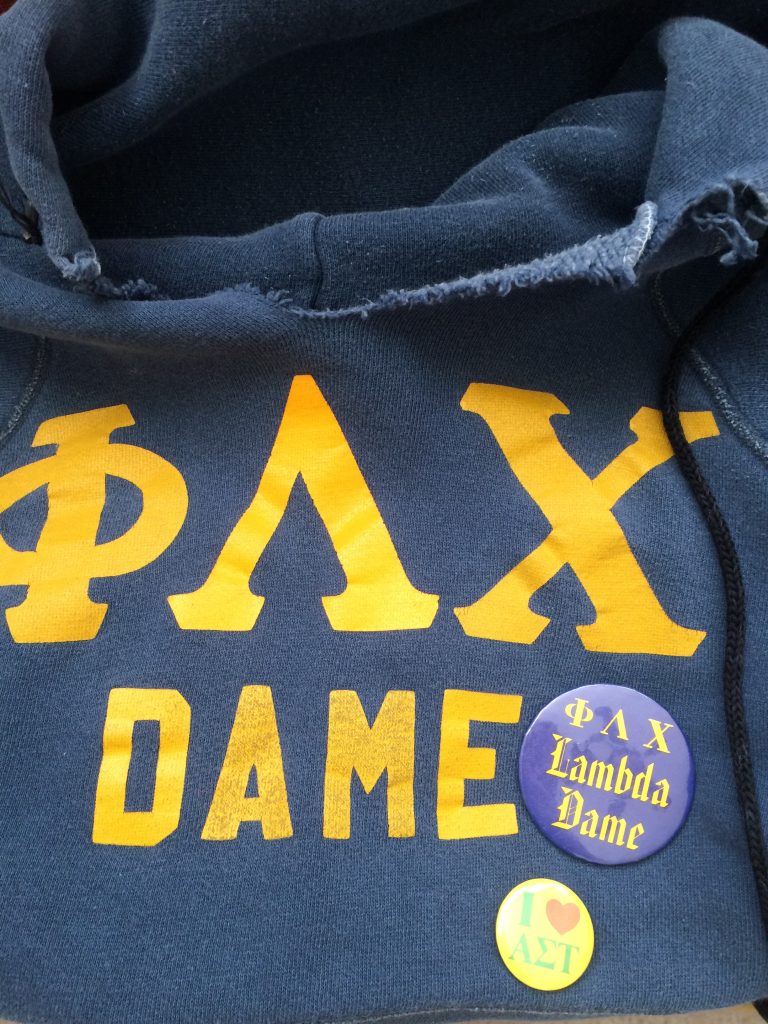
Sharon Husmann’s Greek letter hoodie and buttons.
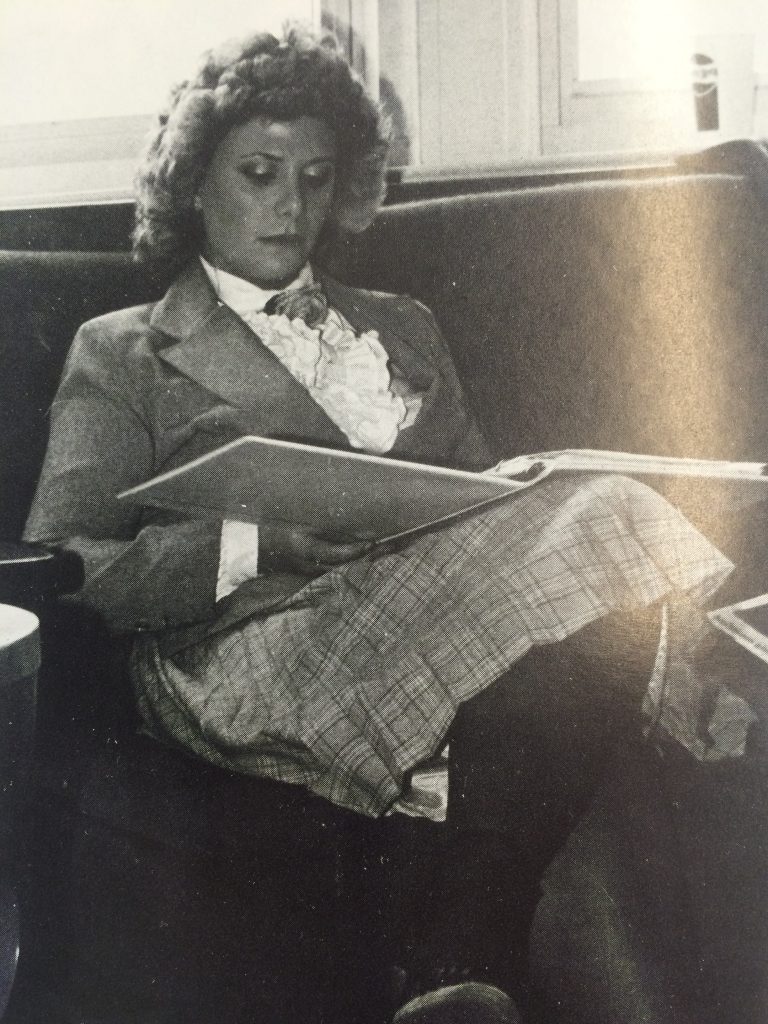
“Dressed up in her business suit, Terri Hedges, sophomore and Sigma Kappa sorority member, takes a quiet moment to study at Brewer Hall during a Sig Kap dress up day.” Echo Yearbook. Northeast Missouri State University, 1982.
With so many students from small towns, it is not surprising that the film Urban Cowboy (1980) was such a hit and influenced campus fashion so strongly. Husmann noted this when she was interviewed, and it was also mentioned in the 1981 yearbook.1 In fact, a new bar opened to accommodate this interest. It was called J.R.’s, named for J.R. Ewing, the character from “Dallas.”2 This was an opportunity for some people to set themselves apart, and show their interests. Pictured below are two women enjoying a drink in their western garb.
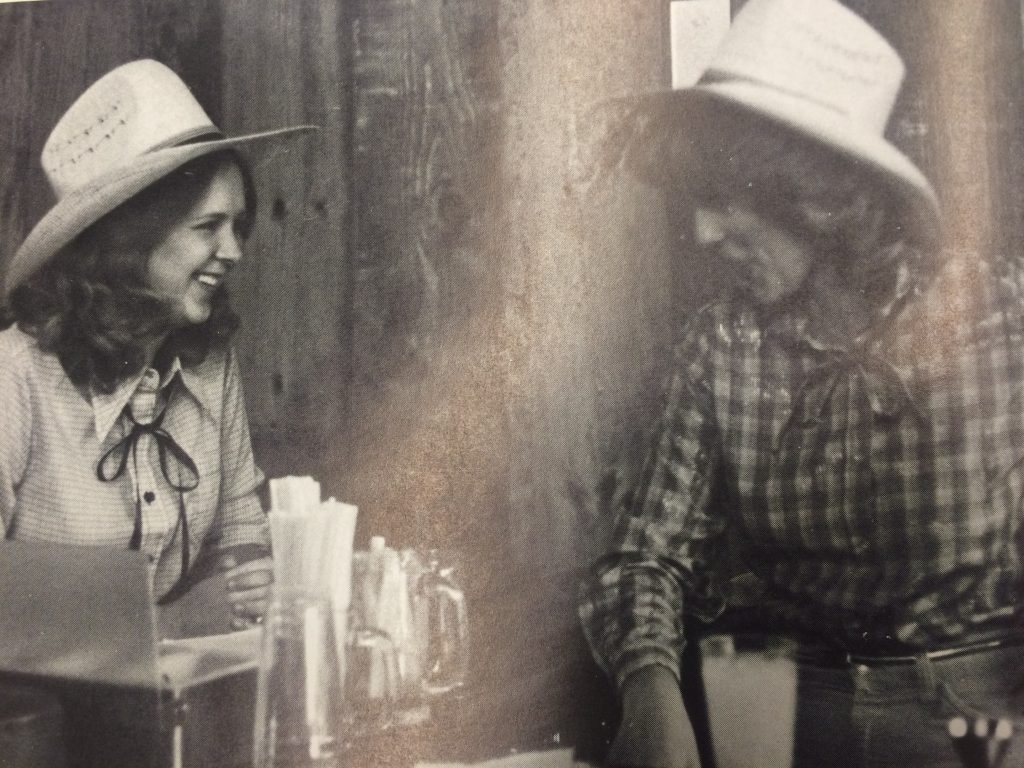
Echo Yearbook. Northeast Missouri State University, 1981.
The yearbooks openly discuss dating life without the pressure of marriage. This is a major change from a few decades beforehand, when dating and finding a spouse was a pervasive idea in the yearbook. There was an article in the 1980 yearbook that reflected on how dating has changed over the course of fifteen years. Both men and women give their perspectives on whether dating still exists. It is clear that dating had become less formal, and less important for social situations. This was attributed to women’s increased independence: “It used to be that a girl couldn’t go somewhere in high school if she didn’t have a date…women don’t feel as trapped anymore.”3
Standards of beauty had changed since the 1950s as well. Dieting was no longer just for women. The yearbook in 1980 featured an article on dieting which claimed “Diets have long been thought of as a women’s preoccupation, for women are the ones who worry about their waistlines. But with the liberation of women came men’s lib. Now they, too, want that suave, sophisticated body to impress their female friends.”4 Concern with personal appearance was becoming less associated with femininity. However, this quote implies that the reason that a man would become interested in dieting was to be attractive to women. This fails to acknowledge personal satisfaction, health benefits, and that not all men are interested in women.
It had also become more acceptable to discuss sexuality publicly for both men and women. An article called “Exposed” in the 1980 yearbook explains that it had been common in men’s dorms to hang pictures from Playboy on the walls, and it was becoming increasingly common for women to hang pictures from Playgirl.5 This shows that women’s sexuality was becoming increasingly accepted.
The consumerism that characterized the 1980s was just as present in Kirksville as anywhere else, and it was very polarizing. The first mention of this was in 1981’s yearbook, in which the popular designer jeans of the time were being discussed. The question was whether or not they were worth the extra cost.6 This discussion continued into 1982 when the “anti-preps” emerged. This divide was mainly based on class associations with the “preppy” style of dress. The anti-preps did not appreciate the blatant flaunting of wealth.
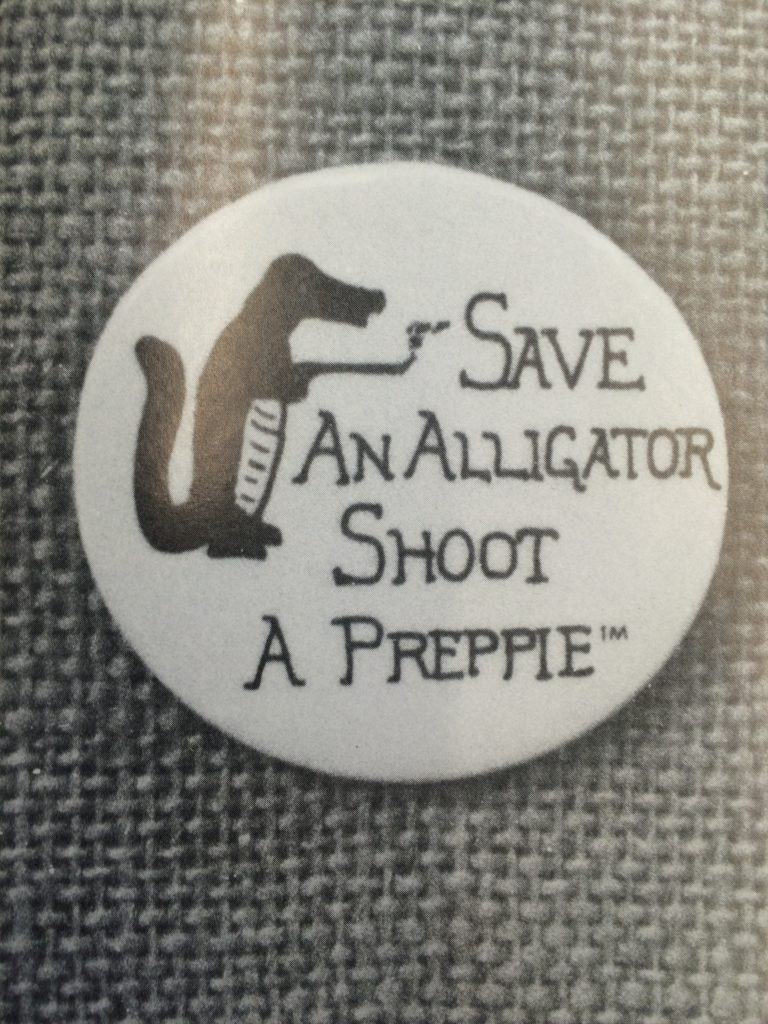
A button that expresses anti-preppy sentiment. The alligator had become a symbol for preppiness around the country. Echo Yearbook. Northeast Missouri State University, 1982.
Those who were critical of the style said that it did not give the opportunity to express individualism.7 The ability to express a personal identity was becoming increasingly important in the 1980s. This was often done by making associations with specific groups clear. Students asserted their identity through placing labels on themselves that they wanted to be associated with. It was commonly accepted that women were becoming more independent, and gender roles were becoming more fragile. Men were able to embrace an interest in their own appearance that was often deemed “feminine,” while women could more publicly express sexuality in a way that had been reserved for men in the past. The yearbooks show a trend toward a more accepting campus that embraced people of different backgrounds a lifestyles into the 1990s and 2000s.
- Sharon Husmann, interview with Kathryn Hodge, St. Louis, MO, March 15, 2018; Truman State University, Echo, Kirksville, MO: 1981, Truman State University Special Collections.
- Echo, 1981.
- Truman State University, Echo, Kirksville, MO: 1980, Truman State University Special Collections.
- Echo, 1980.
- Echo, 1980.
- Echo, 1981.
- Truman State University, Echo, Kirksville, MO: 1982, Truman State University Special Collections.
